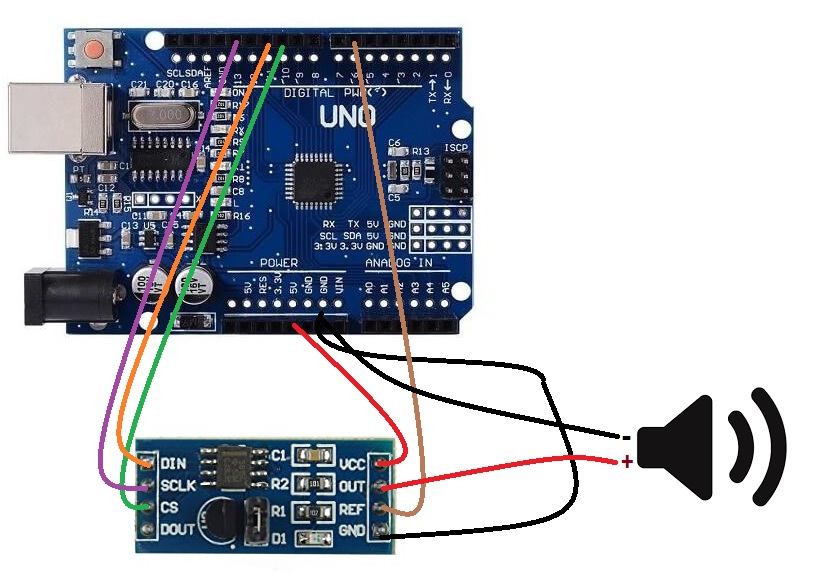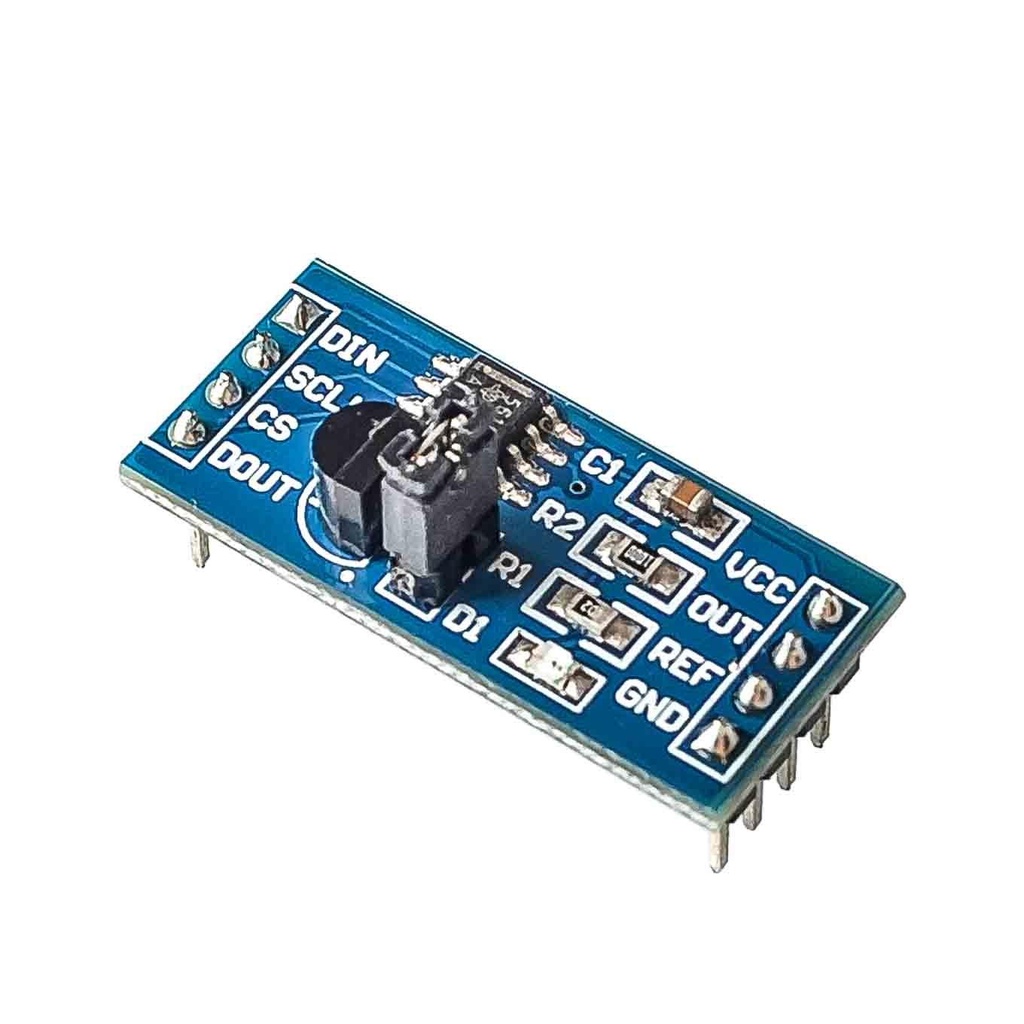DAC Digital To Analog TLC5615 10-Bit Serial Module
The DAC TLC5615 10-Bit Serial Module is an integrated circuit that converts digital signals into analog signals. It provides precise and accurate analog signal output with a resolution of 1024 levels, making it ideal for various applications. The module uses a serial interface, simplifying the connection with microcontrollers or digital devices.
Package Includes:
-
1 x DAC TLC5615 10-Bit Serial Module
Features:
-
10-Bit Resolution: Provides precise analog signal output with 1024 levels, suitable for applications requiring high accuracy.
-
Serial Interface: Supports SPI or I2C communication protocols for easy interfacing with microcontrollers.
-
Wide Supply Voltage Range: Operates from 2.7V to 5.5V, compatible with various power sources.
-
Output Voltage Range: 0V to VDD, generating analog signals proportionate to the supply voltage.
-
Low Power Consumption: Ideal for battery-powered applications.
-
High Accuracy and Stability: Ensures consistent and reliable output signals over time.
-
Easy to Use: Simple interface and documentation for easy integration.
Principle of Work:
The DAC TLC5615 operates by converting digital input signals into analog output signals using an internal DAC. The digital signal is processed through a serial interface (3-wire), and the corresponding analog signal is generated and output, proportional to the input signal.
Pinout of the Module:
-
VCC: Power supply pin, connected to a positive voltage source.
-
GND: Ground pin, connected to the circuit ground.
-
REF: Reference voltage input for digital-to-analog conversion.
-
CS: Chip select pin for device communication.
-
DOUT: Serial data output pin.
-
DIN: Serial data input pin.
-
OUT: Analog output pin.
Applications:
-
Data Acquisition Systems: Converts digital signals into analog for processing and display.
-
Industrial Control Systems: Used for motor or temperature control by converting digital signals to analog.
-
Test and Measurement Equipment: Converts digital signals for testing and analysis.
-
Medical Equipment: Used in systems like patient monitors to output analog signals.
-
Audio Systems: Converts digital audio signals to analog for speaker output.
Circuit:
To connect the TLC5615 to an Arduino:
-
TLC5615 pin 1 (VCC) to 5V
-
TLC5615 pin 2 (GND) to GND
-
TLC5615 pin 3 (CS) to digital pin 10
-
TLC5615 pin 4 (CLK) to digital pin 13
-
TLC5615 pin 5 (DIN) to digital pin 11
-
TLC5615 pin 6 (REF) to GND
-
TLC5615 pin 7 (OUT) to the positive terminal of a speaker (negative to GND)

Library:
No library required.
Code:
#define CS 10
#define CLK 13
#define DIN 11
void setup() {
pinMode(CS, OUTPUT);
pinMode(CLK, OUTPUT);
pinMode(DIN, OUTPUT);
digitalWrite(CS, HIGH);
digitalWrite(CLK, LOW);
digitalWrite(DIN, LOW);
}
void loop() {
for (int i = 0; i < 1024; i++) {
int sample = 512 + (512 * sin(2 * PI * (i / 1024.0)));
digitalWrite(CS, LOW);
shiftOut(DIN, CLK, MSBFIRST, sample >> 2);
shiftOut(DIN, CLK, MSBFIRST, sample << 6);
digitalWrite(CS, HIGH);
}
}
-
Upload the code to the Arduino.
-
The code generates a sine wave and outputs it to the TLC5615, which converts the digital signal to an analog signal, playable through the connected speaker.
Technical Details:
-
Resolution: 10-bit
-
Operating Voltage: 4.5V to 5.5V
-
Output Voltage Range: 0V to VCC
-
Current Output: 10mA
-
Operating Temperature Range: -40°C to +85°C
-
Package Type: SOIC
-
Maximum Clock Frequency: 20 MHz
Resources:
-
TLC5615 Datasheet
-
TLC5615 Schematic Diagram
Comparisons:
-
TLC5615 DAC vs. Resistor-based DAC:
-
TLC5615 DAC: Provides better precision, consistency, and ease of use. Suitable for higher resolutions and stable output over time.
-
Resistor-based DAC: Typically less precise, susceptible to temperature and voltage changes, but offers simplicity and lower cost for less demanding applications.
-
The TLC5615 offers numerous advantages, especially in terms of precision and ease of integration, compared to traditional resistor-based DACs.
